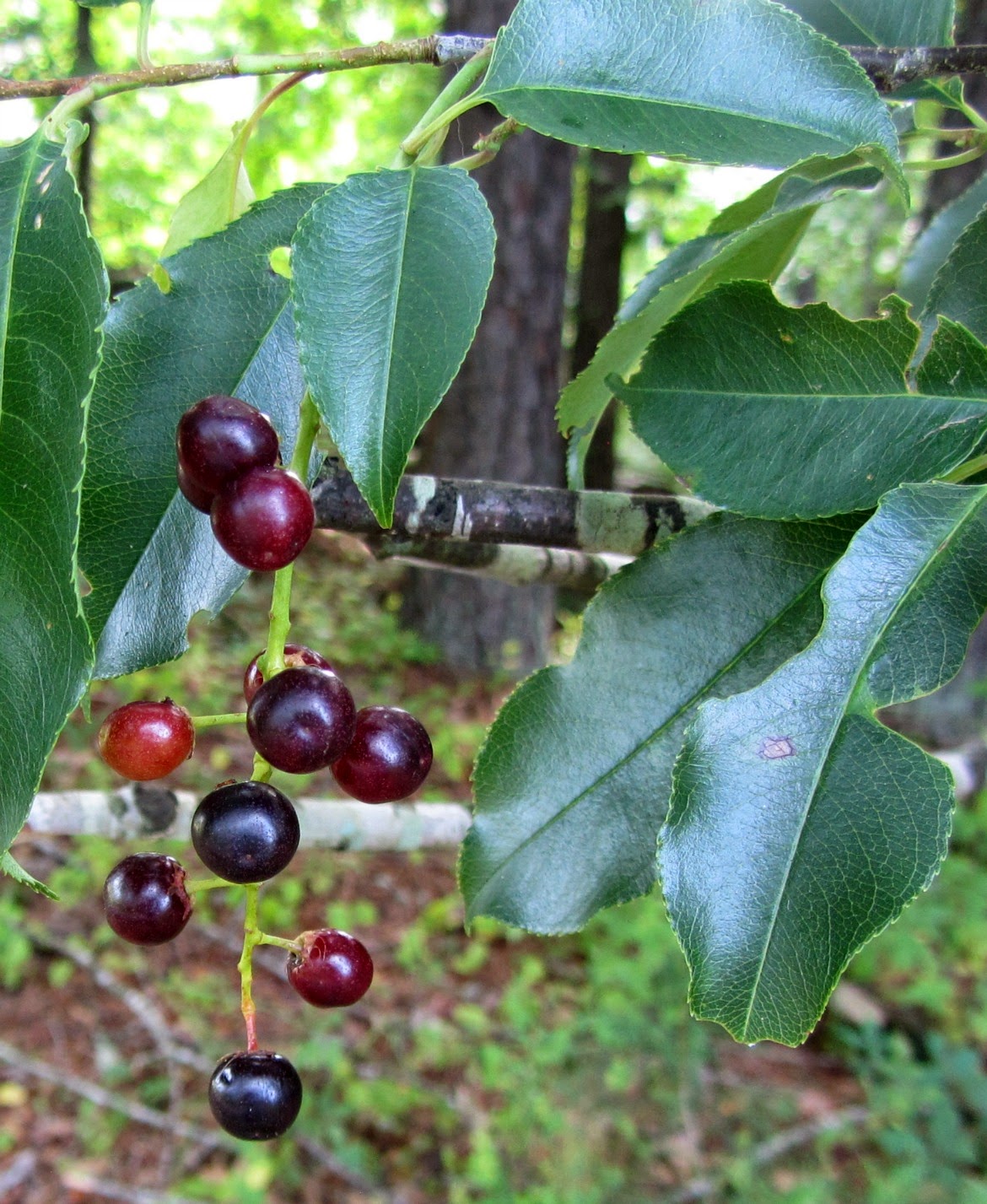Butterfly gardening is a popular topic. Private and public
gardens love to create butterfly gardens, artfully arranging combinations of
parsley, fennel, milkweed and flowering nectar plants. Parsley and fennel are
two well-known garden host plants for butterflies and of course milkweed for
monarch butterflies is a hot topic these days.
 |
| A newly emerged red-spotted purple (Limenitis arthemis) |
Yet not far from these butterfly gardens is a plant that
supports far more butterflies and moths than those 3 plants combined. It is a
plant that is overlooked, under appreciated and downright disparaged at times.
Meet black cherry, Prunus serotina.
Black cherry is native throughout Georgia, from the
mountains to the coastal plain. It is considered a medium sized tree although
it can reach a height of almost 100 feet in ideal conditions. It blooms in
April - long drooping racemes of creamy white flowers that are popular with
native bees and other early pollinators. Pollinated flowers become clusters of
red-black fruit that are eaten by birds (and even humans).
 |
| April flowers of Prunus serotina |
 |
| Ripening fruit and caterpillar-chewed leaves |
According to research by Doug Tallamy and his team, the Prunus genus supports at least 456
different species of Lepidoptera (butterflies and moths). Native cherry trees
like the black cherry are host plants for Eastern Tiger Swallowtails,
Red-spotted purples, Cecropia moths, Coral and Striped Hairstreaks, White
Admirals and many others.
You might already have it in your yard. Look around for it.
 |
| Furcula caterpillar (with fungus) on Prunus serotina |
How do parsley, fennel and milkweed stack up against black
cherry? Both parsley and fennel are in the Apiaceae family which supports less
than 50 native Lepidoptera species in the whole family (across all genera in that family). Milkweed (Asclepias) supports about 12.
So there you have it, 456 species for Prunus compared
to 50 for parsley/fennel and 12 for milkweed. No disrespect to the monarch and
other butterflies, but how many butterflies do you want to support? Make sure that a black cherry is not far from
your butterfly garden and your impact will be exponentially better than without it.
I planted one of these trees that are also native to NY a couple of years ago and once it grows a bit bigger, I hope to see some of these butterflies.
ReplyDeleteHoly Prunus, Ellen! I'm used to implementing suggestions from your columns, but I was slack-jawed at your column today. I just returned awhile ago from an all-day hike with GA Botanical Society, over in Union County. On this trip, I got to see one of my favorite trees in the rich upland slopes of the Southern Blue Ridge, viz. your Prunus serotina. I was looking at one beauty that rose at least 80 feet, and was an estimated 30" dbh, a size that I never see anywhere but on these high mountain slopes.
ReplyDeleteA mutual friend, Hal Massie, came over and I shared with him that nowhere on my land at home is a single specimen of black cherry. And because it is the host plant for so many species of butterfly, I cannot justify my land as being complete without planting one. I told him I had bought one, yes, paid money for a 4 ft. specimen of black cherry, and that I would be setting it out within the week coming. We talked some about red spotted purple and other pollinators that use this plant as a host.
Now, you see my surprise at coming home and reading your weekly entry!
I am sure we have some in our woods but I bought one and planted it in our garden last fall and would you believe it the voles ate the roots and killed the tree. So sad!
ReplyDeleteI have seen many bushes all over the roadside in Southern Georgia and Alabama recently and always thought they were Chokeberry, the blooms look exactly like the Black Cherry blooms picture you posted but the bushes I see are maybe 6 feet tall max and are very full.
ReplyDeleteAm I right about these being Chokeberries?
The flowers of black cherry are in an arrangement known as a "raceme" while the flowers of chokeberry are in an arrangement known as a "corymb" so you can distinguish them that way. So if what you are seeing has long narrowly arranged flowers, it is not chokeberry. Is what you see blooming now? The Itea virginica shrub has similar blooms and is blooming now. If you can get a picture, mail it to me at ganatives@gmail.com and I'll see if I can help.
ReplyDelete